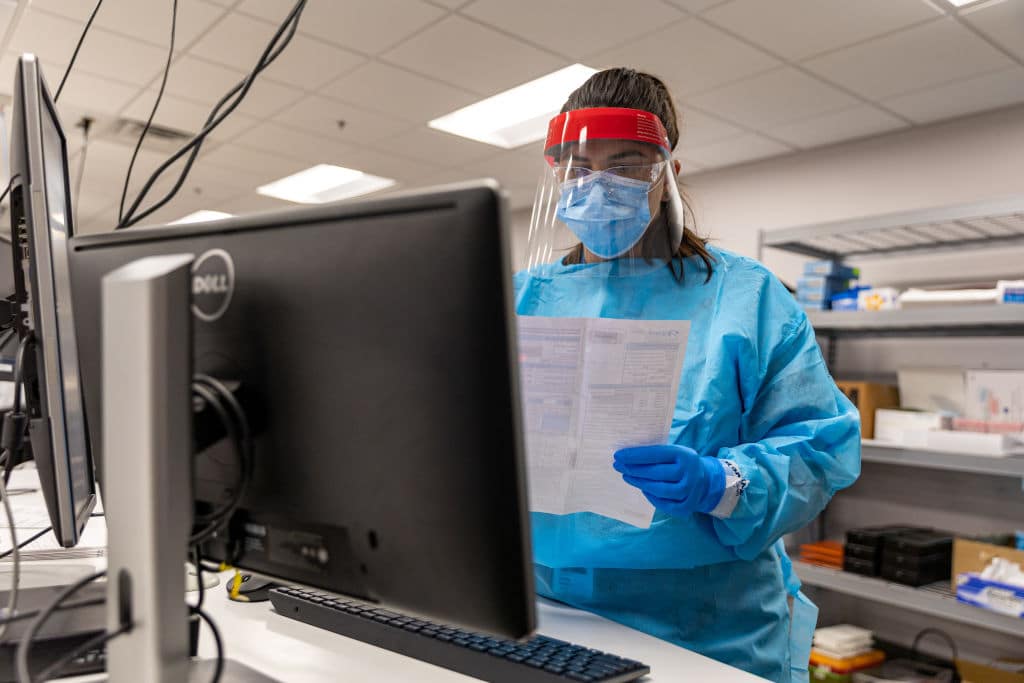TOPLINE
An elderly man has become the first person to die after contracting Alaskapox, health officials confirmed, urging doctors to stay alert for signs of the recently discovered virus that is closely related to other dangerous human pathogens like smallpox and mpox.
KEY FACTS
The man, who was from Alaska’s remote Kenai Peninsula, is one of only seven people known to have contracted Alaskapox virus since its discovery in a patient in Fairbanks in 2015.
Infection with the virus, also known as AKPV, has historically caused mild illness that resolves itself with symptoms including skin lesions, swollen lymph nodes, and joint or muscle pain, though severe disease is more likely in people with compromised immune systems.
Officials from Alaska’s health department said the man likely suffered more serious disease as he was immunocompromised following treatment for cancer and previous patients have not required hospital treatment.
Scientists are not yet certain on how the Alaskapox virus spreads but say evidence suggests it is zoonotic—a disease that jumps from animals into humans—as it is primarily found in small mammals like red-backed voles and shrews.
Loading...
Officials said it was “unclear” how the man was infected but said he reported caring for a stray cat at his home that “regularly hunted small mammals and frequently scratched” him, which could have transmitted the virus.
Forbes Daily: Get our best stories, exclusive reporting and essential analysis of the day’s news in your inbox every weekday.Sign Up
By signing up, you accept and agree to our Terms of Service (including the class action waiver and arbitration provisions), and you acknowledge our Privacy Statement.
While no human-to-human transmission of AKVP has been documented, officials suggested people should cover any skin lesions potentially caused by the virus as contact with these is known to spread similar orthopoxviruses like mpox and smallpox.
WHAT TO DO ABOUT ALASKAPOX?
The first fatal Alaskapox infection is also the first infection reported outside of the state’s Fairbanks region. As the man lived alone in a forested area and reported no recent travel or close contacts with similar illness or travel, this suggests the virus is more widely distributed in animals than previously thought, scientists from the state’s health department said. The incident “warrants increased statewide awareness among clinicians” but otherwise does not give cause for alarm. The scientists issued nine recommendations in their report on the death, including keeping lesions covered, maintaining hygiene practices and possibly prescribing antiviral drugs to patients with the virus who have compromised immune systems.
KEY BACKGROUND
Alaskapox is part of a family of viruses known as orthopoxviruses, several of which are known to infect and cause disease in humans. The most well known of these is variola, or smallpox, a frequently fatal scourge that is one of the deadliest diseases in human history and is still the only human disease to have ever been eradicated. Other orthopoxvirus species include vaccinia (used for the smallpox vaccine), cowpox, camelpox, horsepox, volepox and mpox. The latter virus, formerly known as monkeypox, exploded onto the global scene two years ago and, through a previously unknown form of transmission, spread primarily among sexual networks of men who have sex with men. Experts advising the Centers for Disease Control and Prevention recommend routine vaccination against the virus among at-risk adults and while the virus has dimmed in wealthy countries it is still driving worrying outbreaks in parts of Africa, notably the Democratic Republic of Congo.
Loading...
